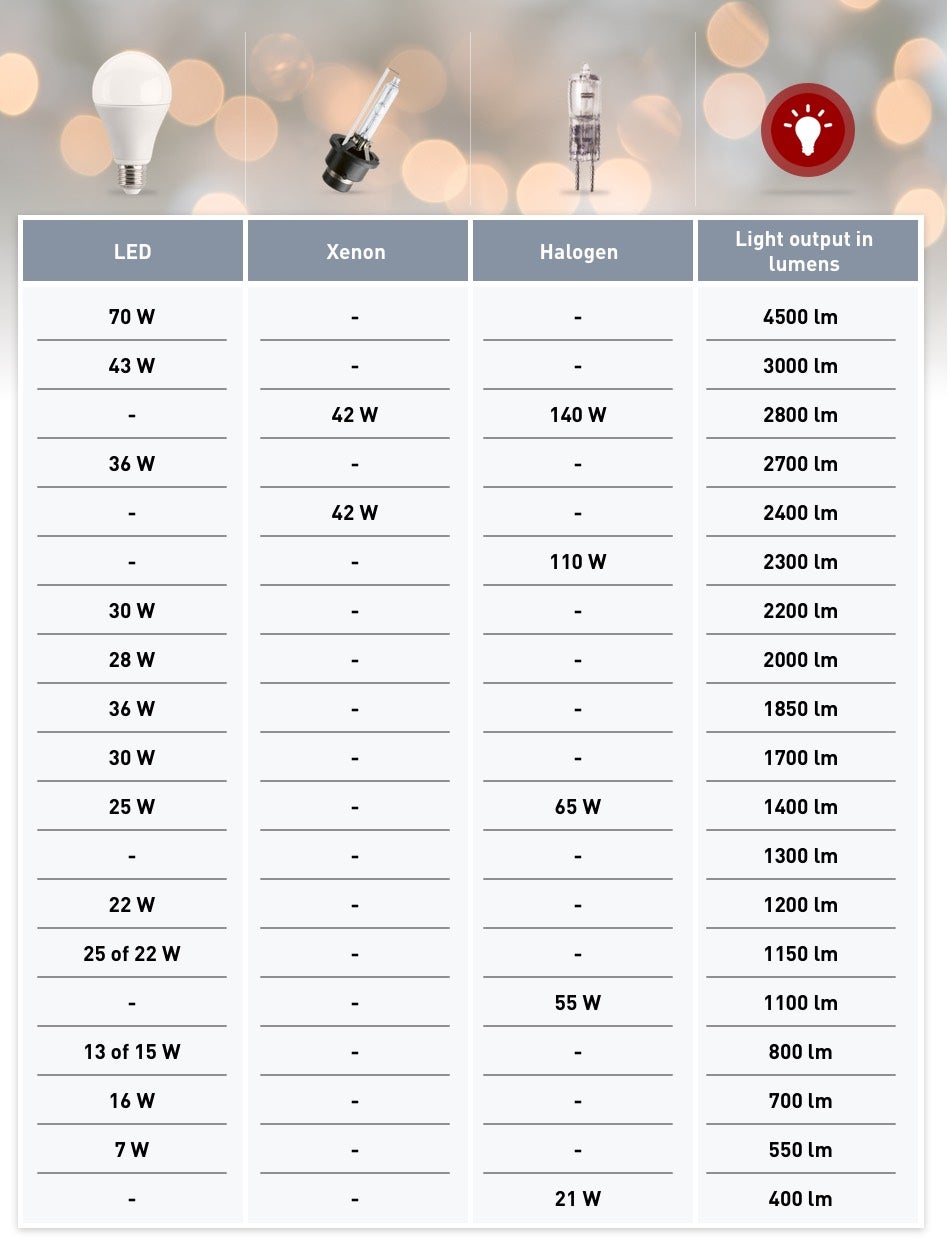Converting Watts to Lumens: Simplifying Light Comparison
Examining lumens allows for easy lamp comparison. In the past, lamp power was measured in watts, but today, lumens are commonly displayed on packaging. Lumens indicate light output, while watts indicate energy consumption. Lumens help us gauge light intensity per wattage.
What's the Wattage-Lumen Relationship for Light Output?
Converting watts directly into lumens can be challenging, as these are two distinct units. In the past, higher wattages were necessary to produce a specific level of light. However, this has evolved, and today, low-wattage lamps can deliver ample illumination. The lumen value should be considered in relation to the watts required for the desired brightness. LED lamps, known for their energy efficiency, offer the added benefit of reducing a vehicle's lighting power consumption. This, in turn, eases the strain on the alternator and more.

Optimal Lumen Selection and Beam Angle for Efficient Work Lighting
In addition to achieving the appropriate lumen output, ensuring even light distribution, often referred to as diffused light, is crucial in the working environment. Achieving such uniform illumination typically involves a combination of various types of lighting.
In practical terms, the following lumen choices are commonly employed when selecting work lamps:
- If you require a concentrated beam near the vehicle, a range of 1000 - 1850 lumens is usually adequate.
- For a beam that covers the immediate vicinity of the vehicle while also extending farther, consider a range of 1850 - 4500 lumens.
The terms "flood," "combo," or "spotlight" denote the beam angle characteristics. When a concentrated beam is needed near the vehicle, especially when people are working in close proximity, work lamps with a relatively low lumen output (maximum 1000 lumens) are often preferred to prevent glare. In certain scenarios, specialized lenses are even utilized to eliminate glare.
Questions?
Would you like to take a closer look at the different working lights? Check out our article: What Work Lights Are Essential for Optimal Job Performance?. Please contact one of our product specialists, find a Kramp dealer near you or contact us at knowledgecenter@kramp.com.

